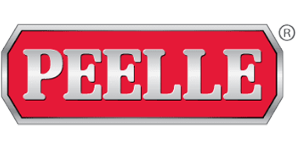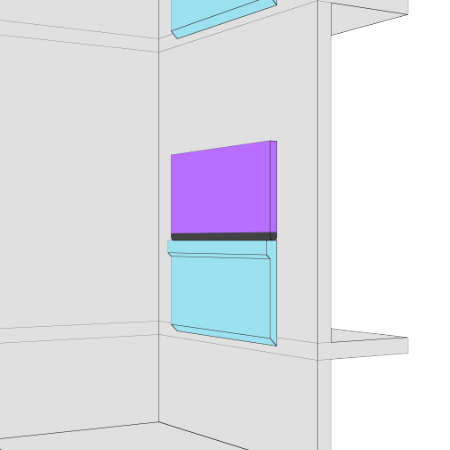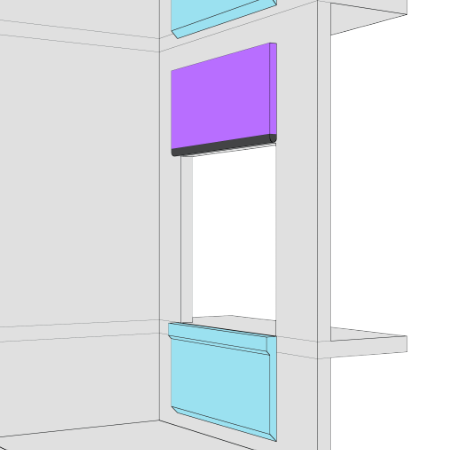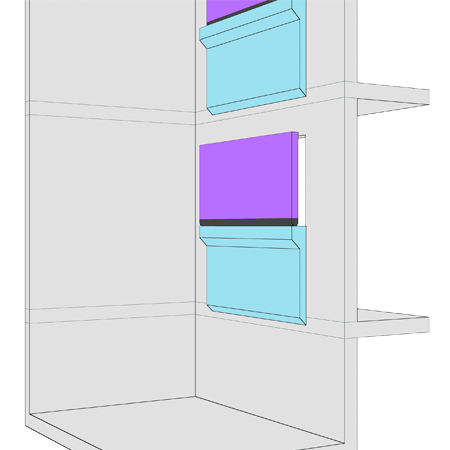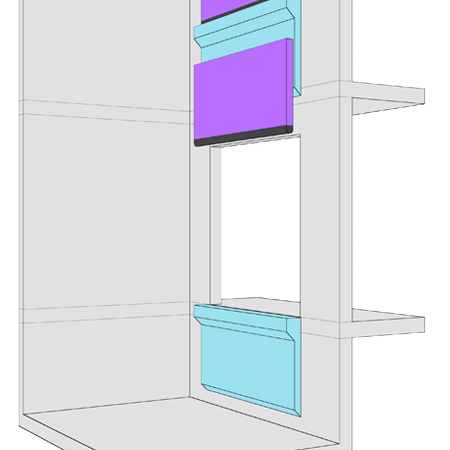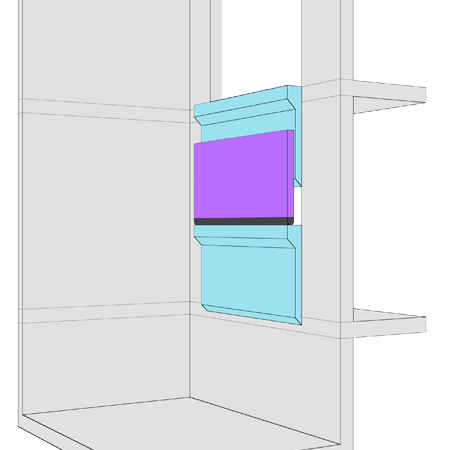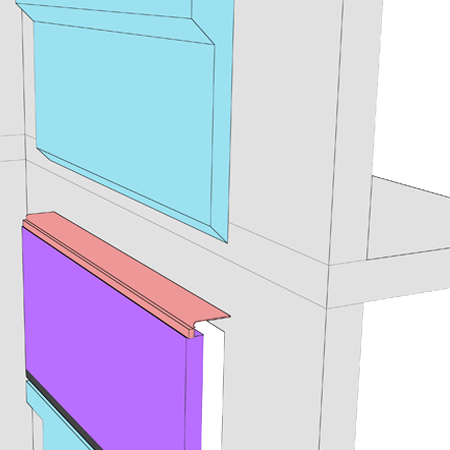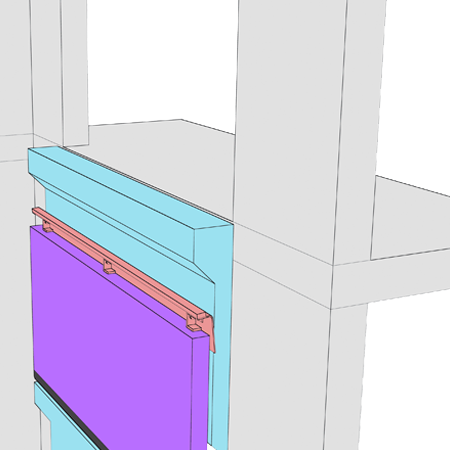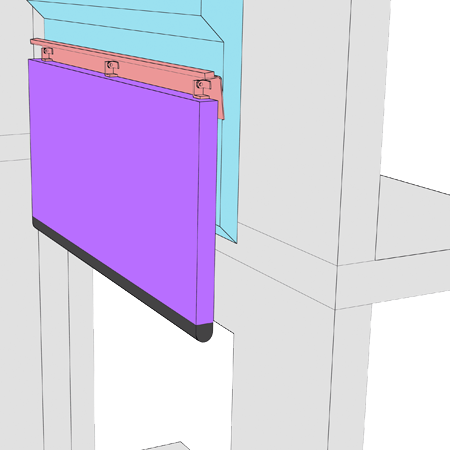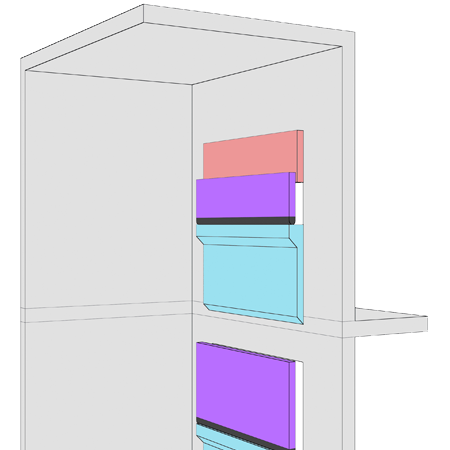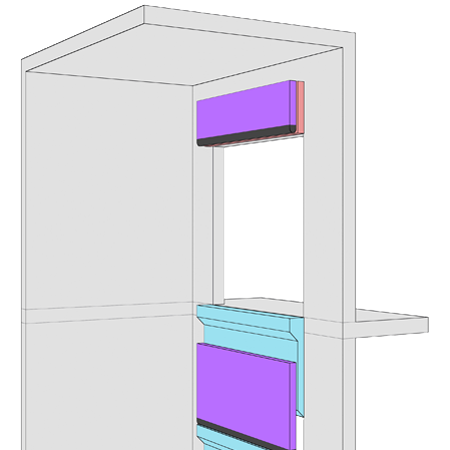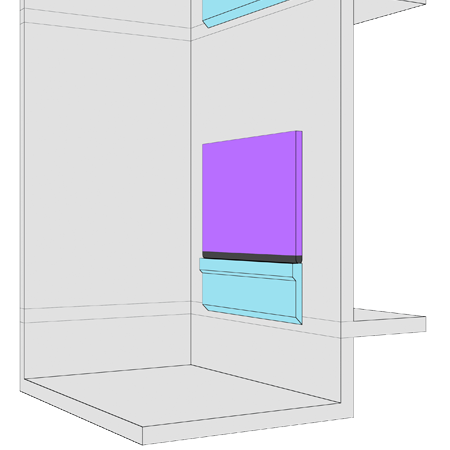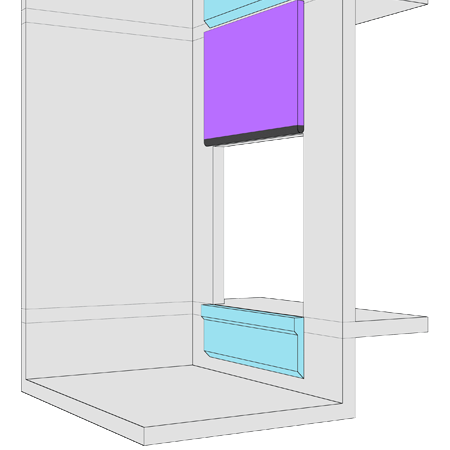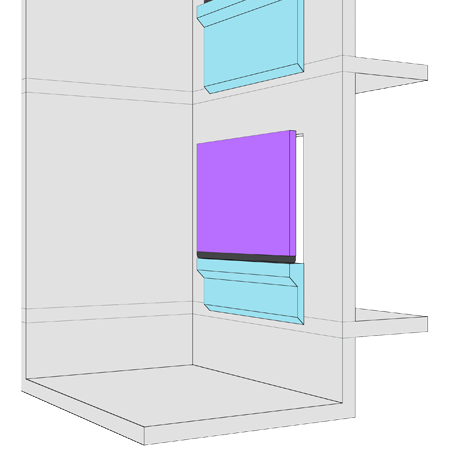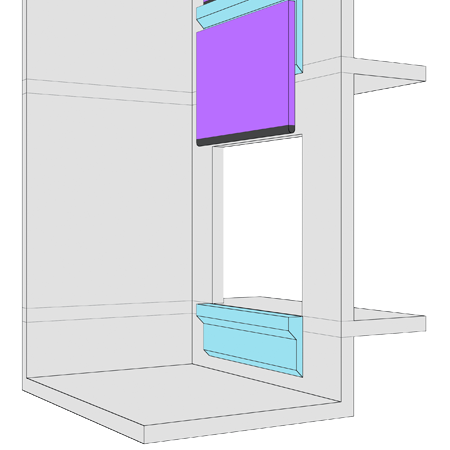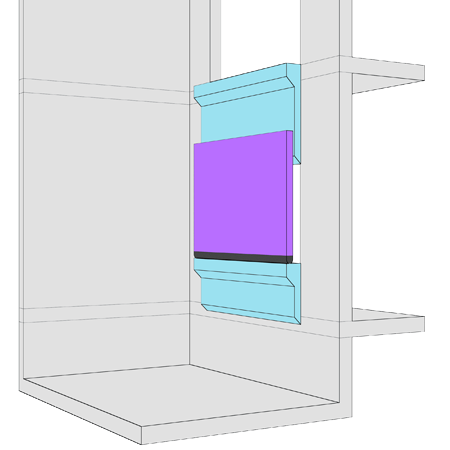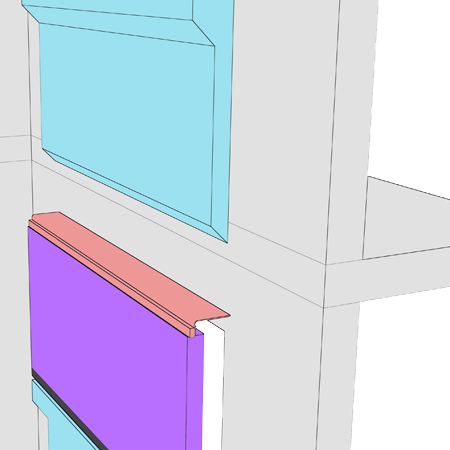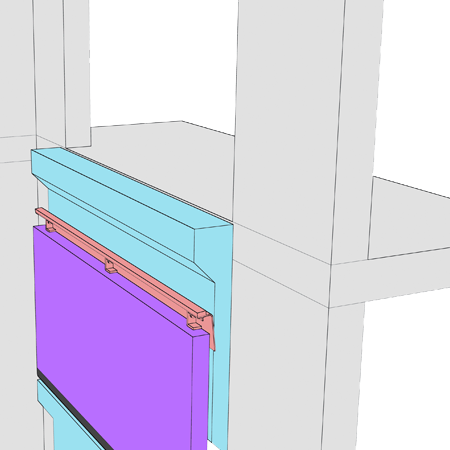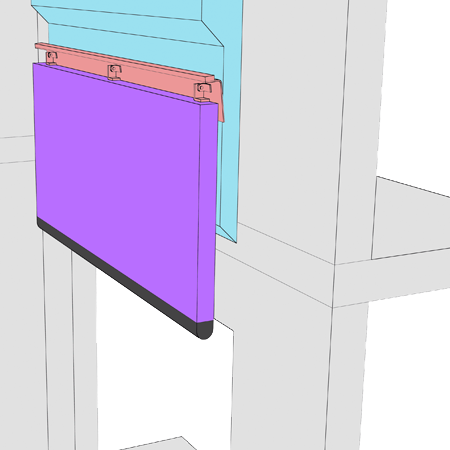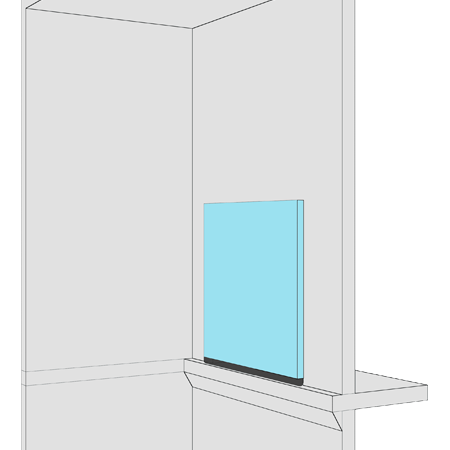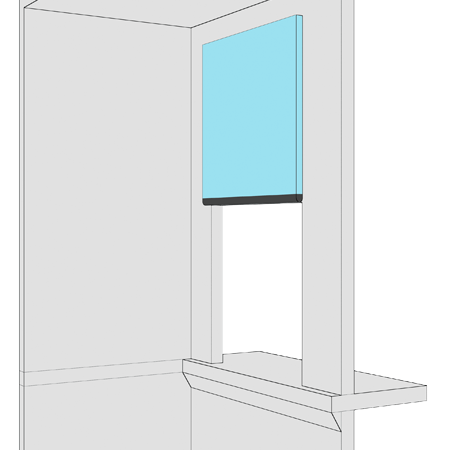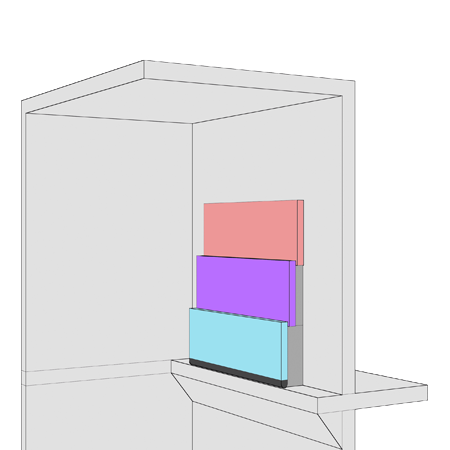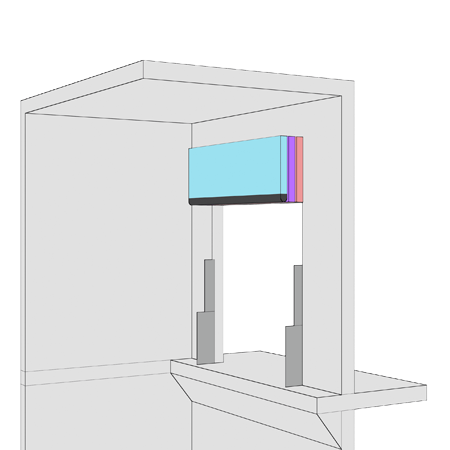Regular Bi parting Door
A Regular biparting Door is our standard vertical door design and consists of an upper and a lower panel of equal height and weight. Regular biparting doors are used when there are ample floor-to-floor heights and clear overhead.
MIN. FLOOR TO FLOOR: 1.5 x OPENING HT + 150 mm [6 in]
MIN. PIT: 0.5 x OPENING HT + 102 mm [4 in]
RETURN SPACE: 330 mm [13 in] BOTH SIDES
CAR CLEARANCE: 127 mm [5 in]
Pass and Extended Biparting Door
Pass-type Doors consist of an upper and a lower panel of equal height, with the upper panel being offset, making room for the door panel above to slide in front of “or pass” the offset panel. In this situation, the lower panel will be constructed with a wider trucking sill. This is called an extended sill. This extended sill will need to be included on all doors in the same line.
Pass doors also require a Fire Lintel that closes the gap between the upper panel and the wall. Fire Lintels are designed to pivot down when they come in contact with the panel above.
Pass-Type Doors are used when there are limited floor-to-floor heights.
WHEN FLOOR TO FLOOR IS LESS THAN 1.5 OPENING HT + 150 mm [6 in]
MIN. FLOOR TO FLOOR: OPENING HT + 381 mm [15 in]
MIN. PIT: 0.5 x OPENING HT + 102 mm [4 in]
RETURN SPACE: 330 mm [13 in] BOTH SIDES
CAR CLEARANCE: 171 mm [6 3/4 in]
Telco Upper Biparting Door
Telco upper or “Telescopic upper” doors consist of two shorter upper panels and a single lower panel. In this situation, the lower panel will be constructed with a wider trucking sill. This is called an extended sill. This extended sill will need to be included on all doors in the same line.
Telco Uppers are used when there is minimal overhead space on the top floor.
MIN. FLOOR TO FLOOR: 1.25 x OPENING HT + 330 mm [13 in]
MIN. PIT: 0.5 x OPENING HT + 102 mm [4 in]
RETURN SPACE: 330 mm [13 in] BOTH SIDES
CAR CLEARANCE: 171 mm [6 3/4 in]
Compound 2:1 Biparting Door
Compound 2 to 1 regular doors consist of a lower panel that is half the height of the upper panel.
These are used at the lowest landing when there is minimal pit depth.
MIN. FLOOR TO FLOOR: 1.66 x OPENING HT + 150 mm [6 in]
MIN. PIT: 0.33 x OPENING HT + 102 mm [4 in]
RETURN SPACE: 330 mm [13 in] BOTH SIDES
CAR CLEARANCE: 127 mm [5 in]
MAX CAR LAP: 50 mm [2 in], BEFORE NOTCHING PLATFORM
Compound 2:1 Pass and Extended Biparting Door
Compound 2 to 1 pass and extended doors consist of a lower panel that is half the height of the upper panel, and an offset upper panel, making room for the door panel above to slide in front of “or pass” the offset panel. In this situation, the lower panel will be constructed with a wider trucking sill. This is called an extended sill. This extended sill will need to be included on all doors in the same line.
Compound Pass doors also require a Fire Lintel that closes the gap between the upper panel and the wall. Fire Lintels are designed to pivot down when they come in contact with the panel above.
These are used at the lowest landing when there is minimal pit depth.
MIN. FLOOR TO FLOOR: 1.17 x OPENING HT + 406 mm [16 in]
MIN. PIT: 0.33 x OPENING HT + 102 mm [4 in]
RETURN SPACE: 330 mm [13 in] BOTH SIDES
CAR CLEARANCE: 170 mm [6 3/4 in]
MAX CAR LAP: 50 mm [2 in], BEFORE NOTCHING PLATFORM
Single Section Slide Up Door
Single section slide-up doors consist of a single-section panel and counterweights on either side of the door.
Slide-up doors are used when there is minimal pit depth and require a building sill projection.
MIN. FLOOR TO FLOOR: 2 x OPENING HT + 143 mm [5 5/8 in]
RETURN SPACE: 460 mm [18 in] BOTH SIDES
CAR CLEARANCE: 171 mm [6 3/4 in]
Three Section Slide Up Door
Three-section slide-up doors consist of three equal-height panels and counterweights on either side of the door.
Slide-up doors are used when there is minimal pit depth and low overhead space and require a building sill projection.
MIN. FLOOR TO FLOOR: 1.33 x OPENING HT + 279 mm [11 in]
RETURN SPACE: 460 mm [18 in] BOTH SIDES
CAR CLEARANCE: 241 mm [9 1/2 in]
